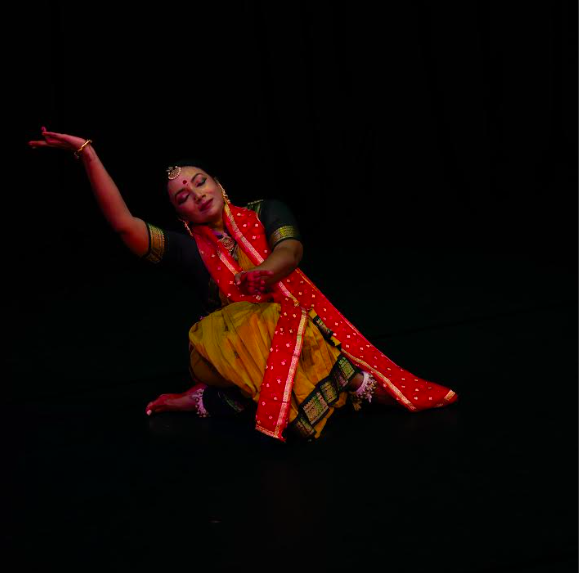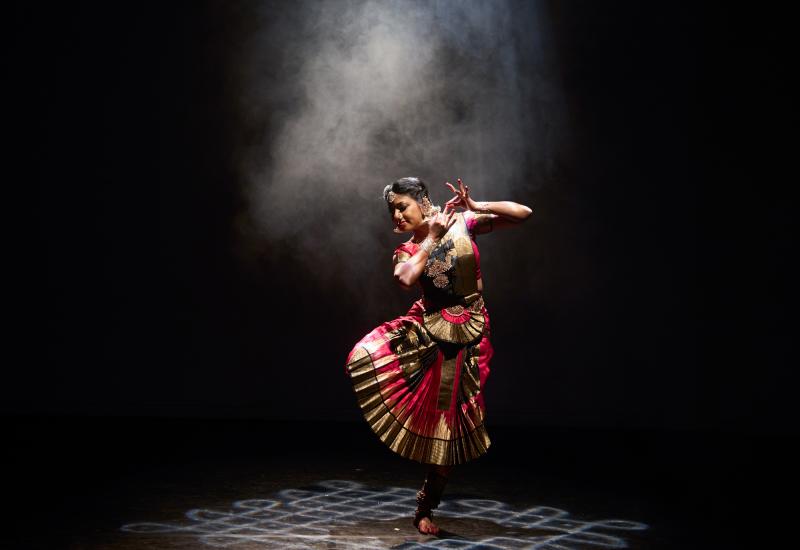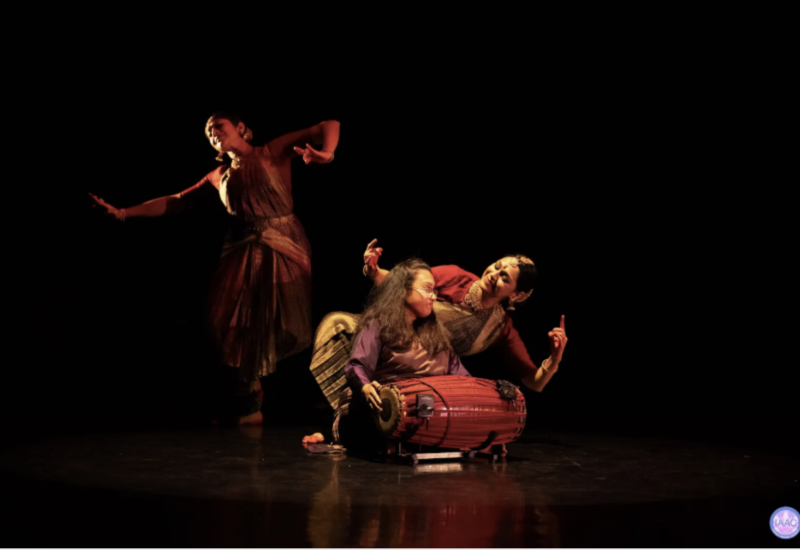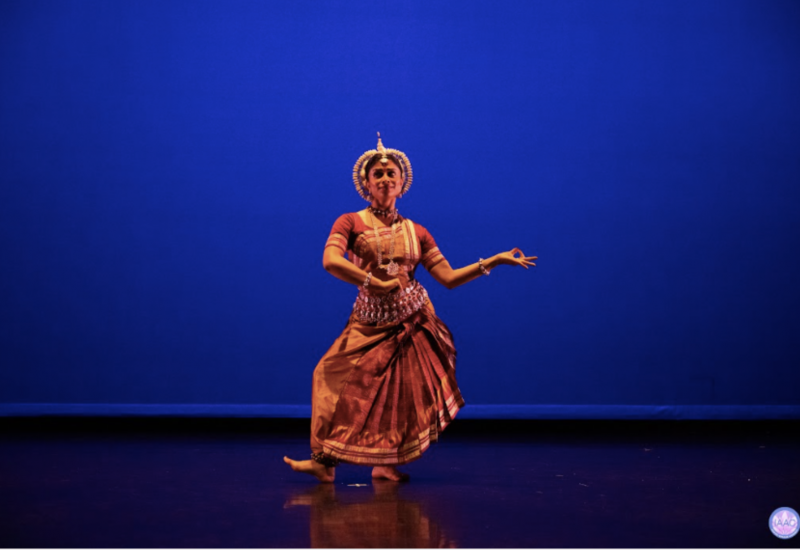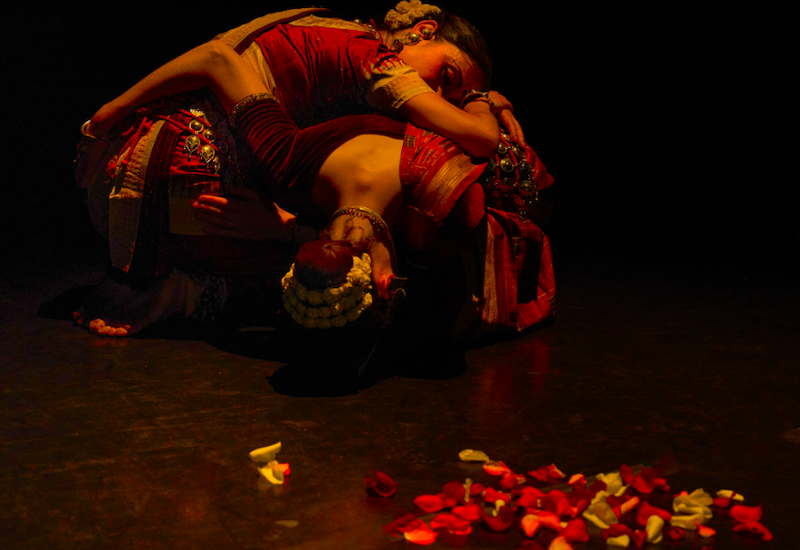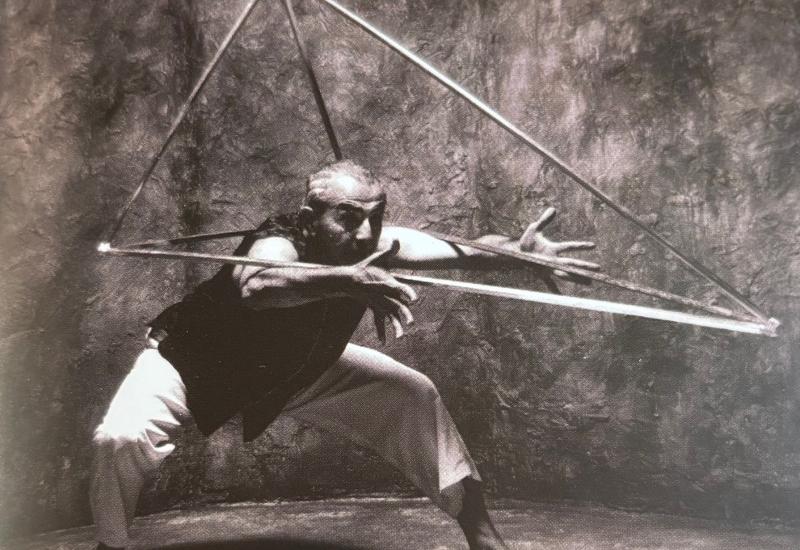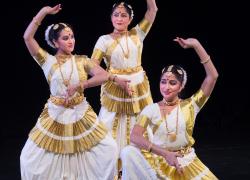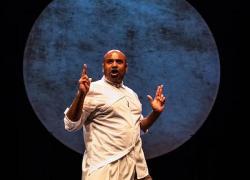Madhavi Reimagined: A Bharatanatyam Exploration by Amritha Jayakrishnan
Madhavi Reimagined: A Bharatanatyam Exploration by Amritha Jayakrishnan
March 28, 2025
Kala Sangam, Bradford
Women have always borne the brunt of war—whether in reality, fiction, or mythology—often paying with their bodies. Madhavi, from the Mahabharata, is one such character. She is bartered among several men due to two unique boons: the ability to restore her virginity after childbirth and the destiny to bear sons who would become great kings. Amritha Jayakrishnan has adapted her grandfather O.N.V. Kurup’s Malayalam poems on Madhavi into a bharatanatyam production. The performance, presented by Kala Sangam through Mind the Gap theatre, brought this ancient yet still relevant story to life.
Kudos to Amritha and Kala Sangam for crafting a bharatanatyam production that resonates with a global audience. Amritha commanded the stage with ease, professionalism, and a deep understanding of the narrative. To bridge the language gap, she interspersed English monologues between episodes, ensuring accessibility for all viewers. Her clever use of a red shawl to shift between characters was both effective and innovative. Amritha’s greatest strength lies in her expressive eyes, which vividly conveyed emotions, drawing the audience into Madhavi’s journey. The earthy and evocative music by Bhagyalakshmi Guruvayur transported me to the backwaters of Kerala, while the lighting designed by Matt Carnazza and executed by Caroline Sheard, despite spatial and technical limitations, was apt.
While the production excelled in dance, music, and production values, certain aspects could have been further refined. A bharatanatyam production differs significantly from a traditional margam and requires a seamless screenplay, holistic storytelling, and continuous character evolution. This is where Madhavi could have been stronger. The character oscillated between sadness and fear for most of the performance, making it difficult to feel more than sympathy for her. To fully immerse the audience, Madhavi’s journey needed greater emotional depth. If the narrative had revealed more facets of her personality before she was pawned off, her eventual transformation into an ascetic would have felt more profound. Additionally, her choice to renounce the world needed a deeper motivation beyond the recurring imagery of the little bird from scene one. A woman who has been reduced to her sexual and reproductive capacity must experience a range of emotions—anger, defiance, betrayal, helplessness, resignation, hope, exhaustion, detachment—before arriving at such a decision. This, to me, is the heart of the story. Almost all these elements were present, but did not always cohere into a seamless emotional arc.
As Amritha continues to develop Madhavi, there is great potential for the production to evolve into an even more layered and compelling work. Her performance at times evoked shades of the choreographer and her Guru, Vidhya Subramanian, particularly in the quivering and puckering of the lips. While this was effective in some moments, at others, it felt distracting—though this may simply be a matter of personal preference.
Overall, Madhavi was a remarkable effort, and with further refinement, it has the potential to be a truly unforgettable bharatanatyam production.

